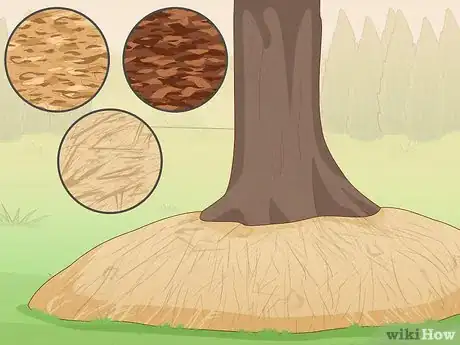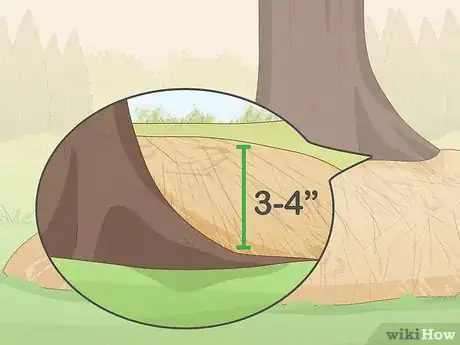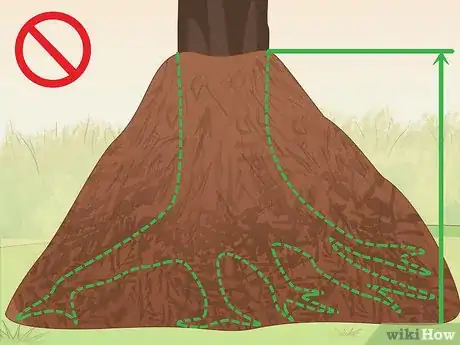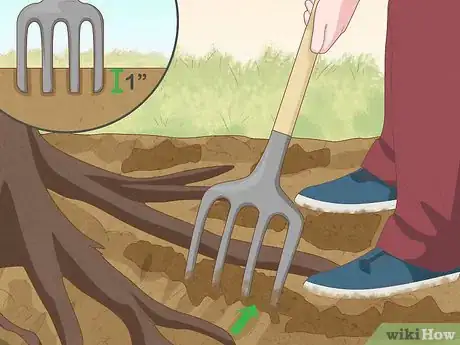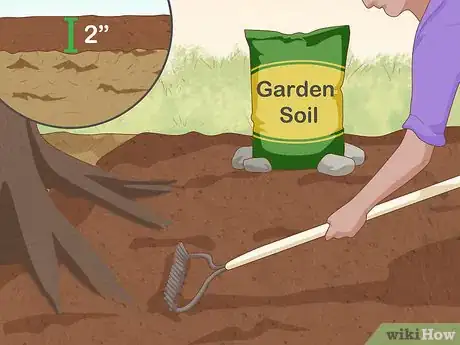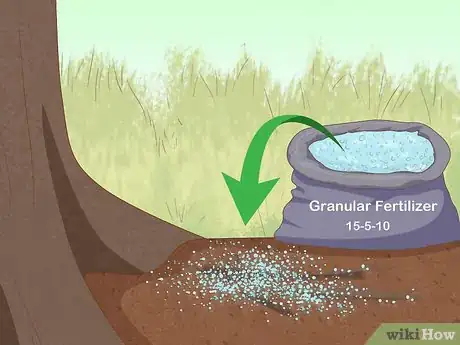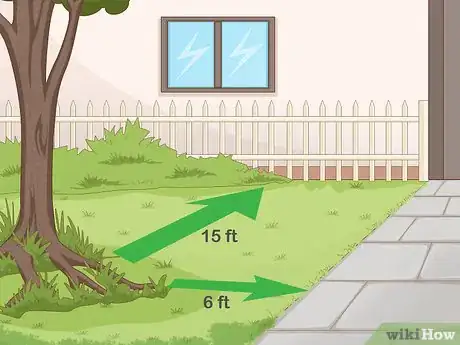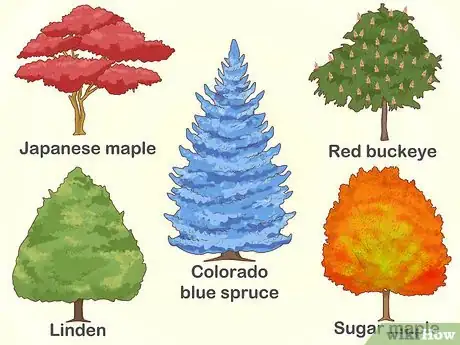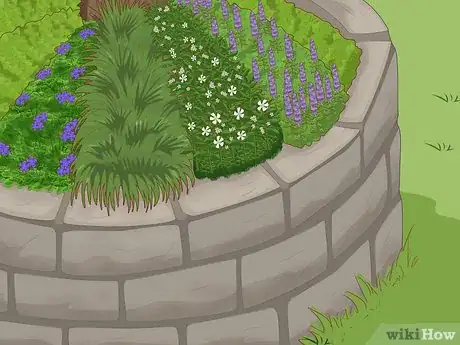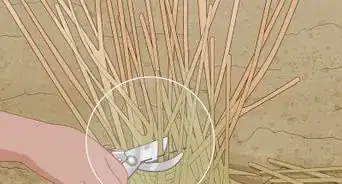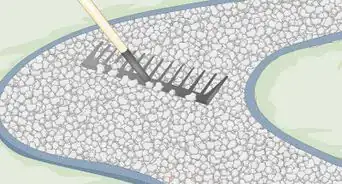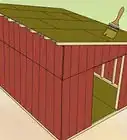This article was co-authored by Benjamin Hansen and by wikiHow staff writer, Megaera Lorenz, PhD. Benjamin Hansen is a Landscape Contractor and the Owner of Artscape Gardens, a boutique landscaping company in Los Angeles, California. With over 12 years of experience, Benjamin specializes in transforming properties into aesthetic, functional, and drought-tolerant oases. Benjamin uses color scheme, dimension, and water conscious spaces to inspire the design and installation of soft scape, hardscape, patios, pathways, irrigation, drainage, fencing, concrete, lighting, and electrical work. Artscape Gardens covers all areas of the C-27 landscape contractor classification.
There are 7 references cited in this article, which can be found at the bottom of the page.
This article has been viewed 82,790 times.
As a tree ages, shallow roots can sometimes expand to the point that they become exposed above the surface of the soil. Roots can also become exposed due to soil erosion or cramped conditions forcing the roots to the surface. If your tree has exposed roots that are causing problems, try covering the roots with mulch or an attractive ground cover. As a last resort, consider removing or partially removing a problem root. Prevent problems by planting your trees strategically and choosing species that are less prone to surface roots.
Steps
Covering Exposed Roots with Mulch
-
1Select an organic mulch material. A layer of mulch around the tree’s roots can cushion and insulate the roots and minimize soil erosion. Pick a material that won’t absorb too much moisture from the soil around the base of the tree. A few options include:[1]
- Pine straw. This material is not absorbent and will allow moisture to reach your tree’s roots easily.
- Pine bark nuggets. If you choose this material, make sure to remove old nuggets before laying down new ones, or the old mulch may absorb too much moisture from around the tree’s roots.
- Shredded wood mulch. Because this material absorbs moisture easily, avoid putting too much at the base of your tree. Use a layer only about 1 inch (2.5 cm) thick.
-
2Put down a layer of mulch no more than 3-4 inches (7.6-10.2 cm) thick. You will need to put down enough mulch to cover the exposed roots, but take care not to put down so much that you smother the roots.[2]
- Use thinner layers when applying more absorbent mulches (such as shredded wood), and take care that the pile doesn’t become too thick when you refresh the mulch.
Advertisement -
3Make the area of mulch wide enough to cover the exposed roots. Your mulched area may need to be up to 2/3rds the diameter of the tree’s canopy.[3] Don’t worry if the mulch covers up part of the lawn around the tree. Allowing your roots to compete with your grass will only lead to further soil erosion.
-
4Avoid piling mulch against the trunk of the tree. If you pile up too much mulch around the base of the tree, it may cause the bark at the bottom of the tree to become diseased. Leave a little space between your mulched area and the base of the tree.[4]
Planting Ground Cover over the Roots
-
1Break up the top 1 inch (2.5 cm) layer of soil around the roots. Use a spading fork to very carefully break up the compacted topsoil between the surface roots. Take care not to damage the roots themselves, and go no deeper than 1 inch (2.5 cm).[5] #*Adding this ground cover means vegetation will hopefully eventually cover the tree roots in entirety.[6]
-
2Spread no more than 2 inches (5 cm) of garden soil over the topsoil. Add garden soil to your newly broken-up topsoil layer, being very careful not to layer on more than 2 inches (5 cm) of new soil. If you add too much new soil, your tree’s roots will suffocate, and the tree will eventually die.[7]
- While you may need to replenish the new soil each year, do not add more than 2 inches (5 cm) of soil to the base of your tree per year.
-
3Add a light application of general-purpose granular fertilizer. Adding some fertilizer will help keep your tree healthy and prevent the ground cover plants from using up too many valuable nutrients. Following the package directions, sprinkle a little 15-5-10 or 13-13-13 NPK fertilizer over the exposed root area.[8]
-
4Plant a shade-loving ground cover plant around the base of the tree. Pick a hearty plant that doesn’t need a lot of sunlight or moisture. In general, the best times to plant ground cover plants are early spring and late fall.[9] A few good options include:
- Wild violets
- Ajuga
- Periwinkle (vinca)
- Asiatic jasmine
- Monkey grass
- Creeping thyme or dymondia[10]
-
5Consider what kind of cover fits the microclimate. Depending on how much shade there is, how much sun there, and whether people should be able to walk on the ground cover, you might want to choose a different type of vegetation.[11]
- If you don't need to walk on the ground cover, consider a Red Apple succulent cover because it grows quickly.[12]
Preventing Root Exposure
-
1Avoid planting shade trees too close to buildings and paths. Surface roots mainly become a problem when they interfere with footpaths, sidewalks, and structures such as house foundations. Try to plant shade trees no closer than 6 feet (2 meters) from sidewalks and pavements, and 15 feet (5 meters) from house foundations.[13]
-
2Plant tree species that are less prone to root exposure. Root exposure problems are often associated with fast-growing shade trees, such as Arizona ash, silver maple, poplar, and willow. When selecting trees to plant on your property, consider choosing slower-growing species instead.[14] A few good options include:
- Linden
- Colorado blue spruce
- Sugar maple
- Japanese maple
- Red buckeye
-
3Take measures to prevent soil erosion on your property. Tree roots are often exposed by soil erosion. If your property has serious erosion problems, you may need to bring in a landscaping expert to install erosion barriers. Other measures you can take include:[15]
- Covering bare patches of soil with mulch or ground cover plants, especially on slopes.
- Not over-watering your plants so that you do not wash away too much soil.
- Using jute netting or coconut fiber mats to keep soil in place until cover plants can become established.
- Putting a layer of mulch around the bases of newly-planted trees to prevent erosion as the tree grows.
Expert Q&A
Did you know you can get expert answers for this article?
Unlock expert answers by supporting wikiHow
-
QuestionWhat can you do about exposed tree roots?
 Benjamin HansenBenjamin Hansen is a Landscape Contractor and the Owner of Artscape Gardens, a boutique landscaping company in Los Angeles, California. With over 12 years of experience, Benjamin specializes in transforming properties into aesthetic, functional, and drought-tolerant oases. Benjamin uses color scheme, dimension, and water conscious spaces to inspire the design and installation of soft scape, hardscape, patios, pathways, irrigation, drainage, fencing, concrete, lighting, and electrical work. Artscape Gardens covers all areas of the C-27 landscape contractor classification.
Benjamin HansenBenjamin Hansen is a Landscape Contractor and the Owner of Artscape Gardens, a boutique landscaping company in Los Angeles, California. With over 12 years of experience, Benjamin specializes in transforming properties into aesthetic, functional, and drought-tolerant oases. Benjamin uses color scheme, dimension, and water conscious spaces to inspire the design and installation of soft scape, hardscape, patios, pathways, irrigation, drainage, fencing, concrete, lighting, and electrical work. Artscape Gardens covers all areas of the C-27 landscape contractor classification.
Licensed Landscape Contractor
Things You’ll Need
Covering Exposed Roots with Mulch
- Organic mulch, such as pine straw, shredded wood, or pine bark nuggets
Planting Ground Cover over the Roots
- Spading fork
- Garden soil mix
- General-purpose granular fertilizer (15-5-10 or 13-13-13)
- Shade-loving ground cover plants, such as violets, vinca, or Asiatic jasmine
Trimming Exposed Roots
- Garden spade
- Root saw (for larger roots) or shears or loppers (for smaller roots)
- Root barrier to prevent regrowth
Preventing Root Exposure
- Slow-growing shade trees, such as blue spruce, linden, or red buckeye
- Mulch
- Soil-retention materials, such as jute netting or coconut fiber mats
References
- ↑ http://www.oldhouseweb.com/product-showcase/how-to-deal-with-exposed-tree-roots-in-established-yards-11698.shtml
- ↑ https://www.loveyourlandscape.org/expert-advice/tree-care/soil-and-root-care/root-care-when-roots-become-a-problem/
- ↑ http://www.oldhouseweb.com/product-showcase/how-to-deal-with-exposed-tree-roots-in-established-yards-11698.shtml
- ↑ https://www.loveyourlandscape.org/expert-advice/tree-care/soil-and-root-care/root-care-when-roots-become-a-problem/
- ↑ http://counties.agrilife.org/galveston/files/2012/03/04-15-2015-Dealing-with-Exposed-Tree-Roots-by-Dr.-William-M.-Johnson.pdf
- ↑ Benjamin Hansen. Licensed Landscape Contractor. Expert Interview. 6 October 2020.
- ↑ http://counties.agrilife.org/galveston/files/2012/03/04-15-2015-Dealing-with-Exposed-Tree-Roots-by-Dr.-William-M.-Johnson.pdf
- ↑ http://counties.agrilife.org/galveston/files/2012/03/04-15-2015-Dealing-with-Exposed-Tree-Roots-by-Dr.-William-M.-Johnson.pdf
- ↑ https://www.gardeningknowhow.com/ornamental/groundcover/gcgen/ground-covers-under-trees.htm
- ↑ Benjamin Hansen. Licensed Landscape Contractor. Expert Interview. 6 October 2020.
- ↑ Benjamin Hansen. Licensed Landscape Contractor. Expert Interview. 6 October 2020.
- ↑ Benjamin Hansen. Licensed Landscape Contractor. Expert Interview. 6 October 2020.
- ↑ http://counties.agrilife.org/galveston/files/2012/03/04-15-2015-Dealing-with-Exposed-Tree-Roots-by-Dr.-William-M.-Johnson.pdf
- ↑ http://counties.agrilife.org/galveston/files/2012/03/04-15-2015-Dealing-with-Exposed-Tree-Roots-by-Dr.-William-M.-Johnson.pdf
- ↑ https://www.nrcs.usda.gov/Internet/FSE_DOCUMENTS/nrcs144p2_063808.pdf
About This Article
To cover exposed roots without harming the tree, opt for a non-absorbent organic mulch, such as pine straw or pine bark nuggets. Cover the roots with a layer of mulch no more than 3 to 4 inches thick, or thinner if you’re using a more absorbent material, like shredded wood mulch. Use enough mulch to cover the entire area of exposed roots, which may be up to two thirds of the diameter of the tree canopy. To prevent rot, leave a little space between the mulch and the base of the tree. Never pile mulch directly against the tree trunk. Keep reading for more expert tips, like how to plant ground cover plants at the base of a tree!
